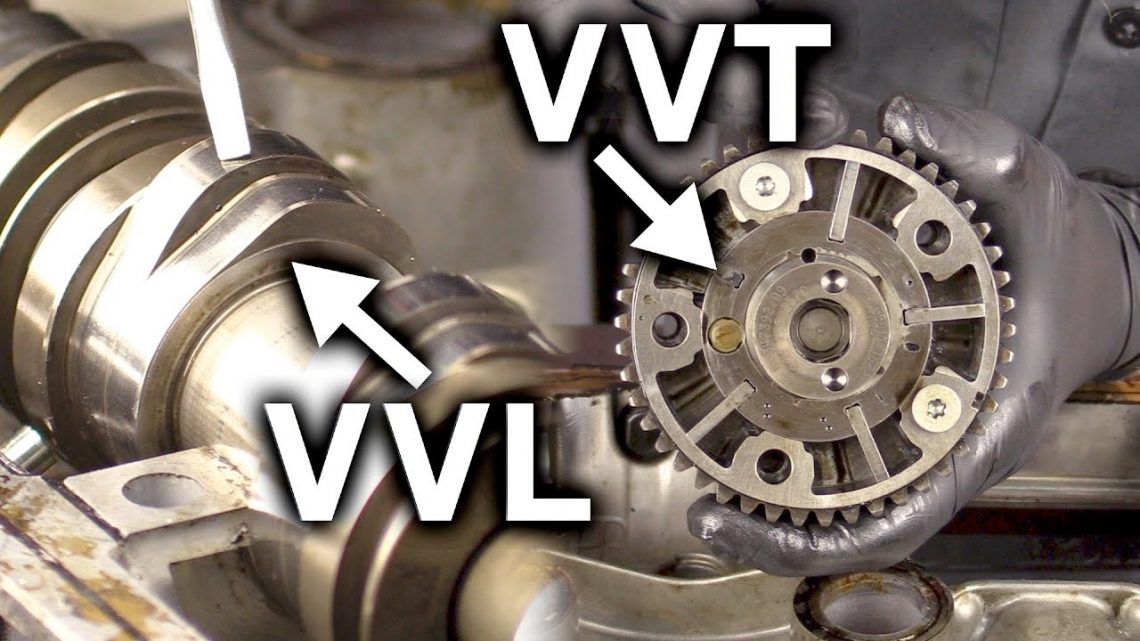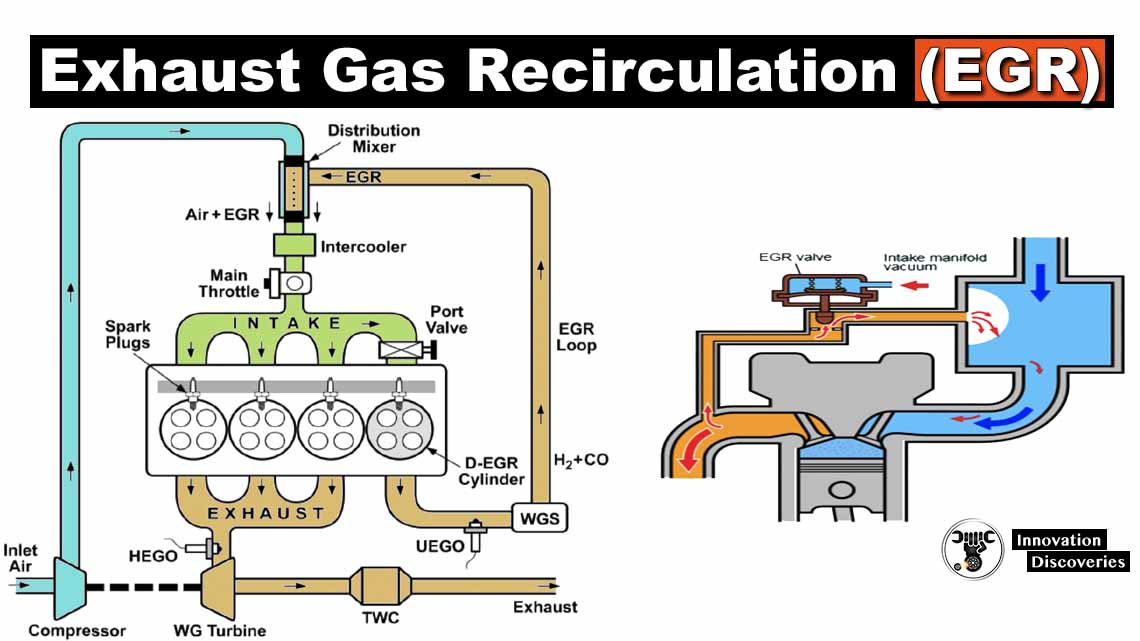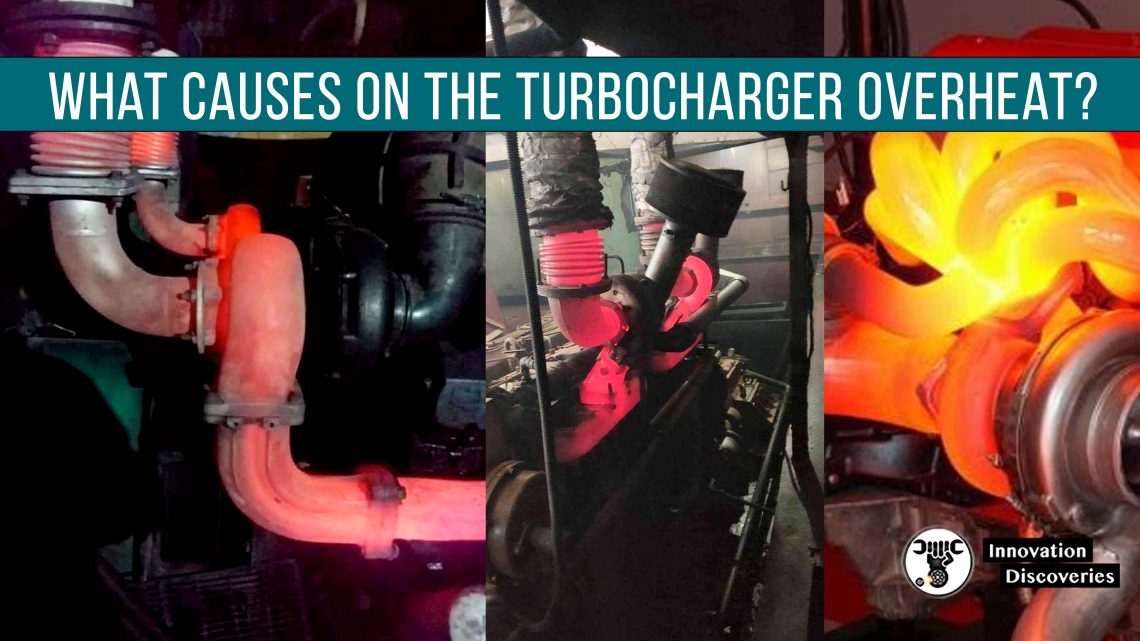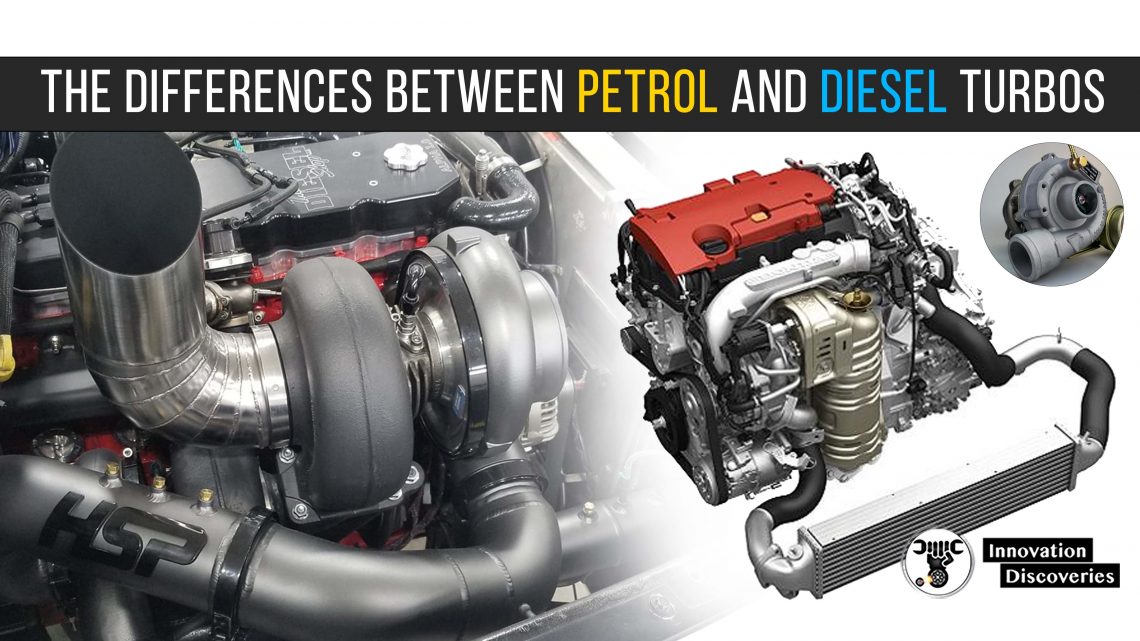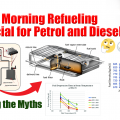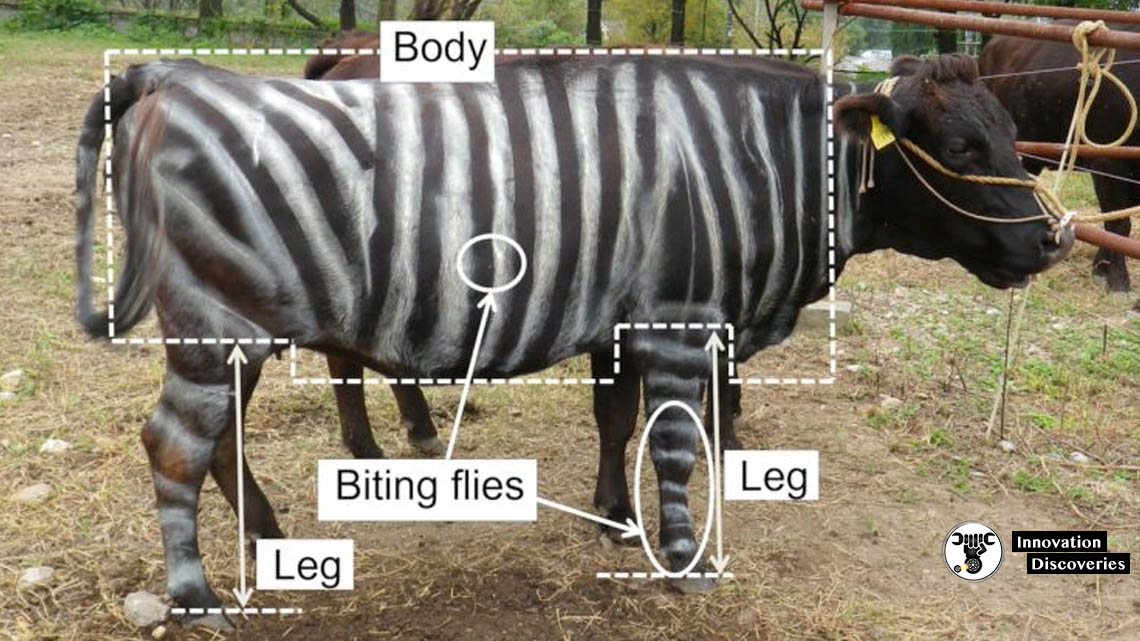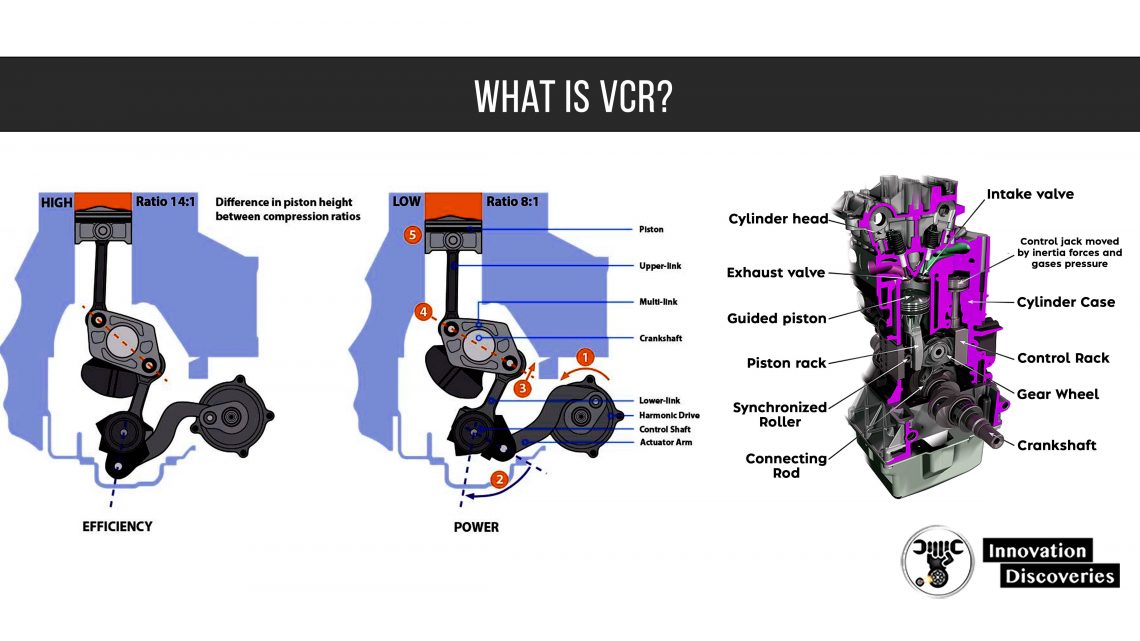
(VARIABLE COMPRESSION RATIO ENGINES)
Making the compression ratio variable is a significant source of innovation that is already generating edifying results.
The compression ratio of a reciprocating internal combustion engine is defined by the relationship between the cylinder volume and the combustion chamber volume [see diagrams: (V1 + V2)/V1].

In conventional engines, this compression ratio is fixed and the result of a compromise.
VCR (Variable Compression Ratio) can eliminate this compromise.
VCR is used to adapt the volume of the combustion chamber to the mass of the gas that is introduced into it.
Hence, the compression ratio of a VCR engine is high at low loads and thus provides improved efficiency during the expansion power stroke.
At high loads during turbocharging, its compression ratio is lower than that of a conventional engine, so that the temperature and pressure conditions remain “normal” despite the high mass of gas introduced into the cylinder, so combustion takes place safely.
A low minimum compression ratio gives access to extreme low-end specific torques, which are inaccessible to conventional engines in normal conditions.
The compression ratio variability of VCR engines makes it possible to have “several engines in one”.
VCR is definitely a factor that optimizes the efficiency through the expansion ratio, the reduction in cubic capacity (downsizing), and the reduction in engine speed (down speeding).
Flexible VCR (continuously controlled cylinder-by-cylinder) is another stage in compression ratio control:
It’s the mandatory point of passage to make the compression ignition (CAI/HCCI) of multicylinder engines efficient throughout a wide range of use.
Compression ignition is a major challenge for fuel consumption reduction.
CAI-HCCI has never been industrialized and likely never will be unless a flexible VCR solution becomes available.
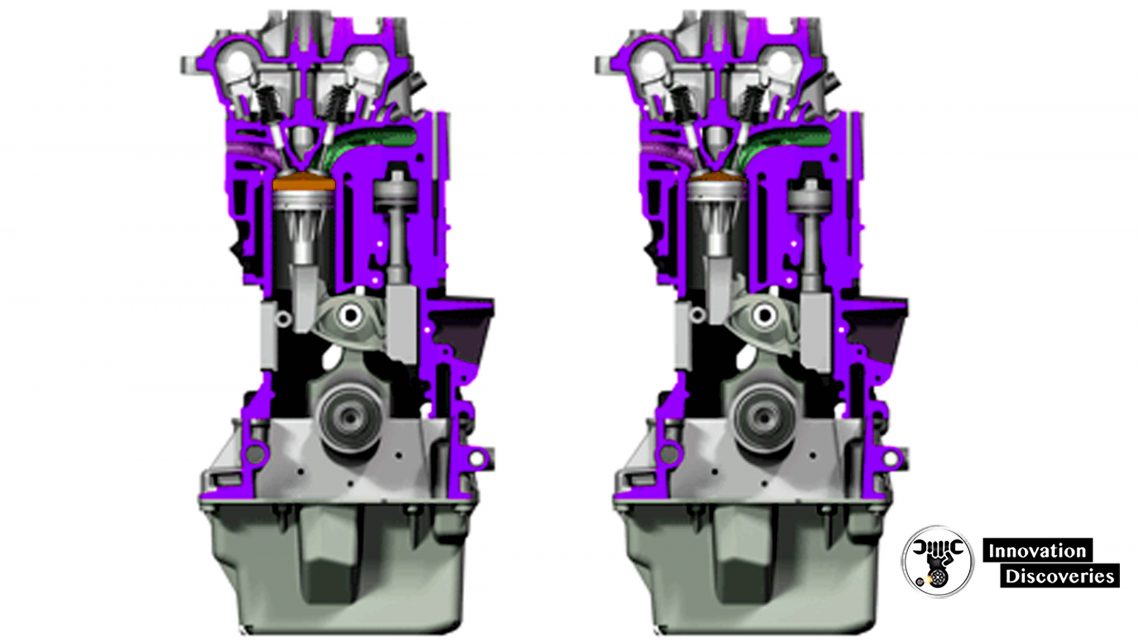
Another vital point for the future:
- A VCR engine is by definition capable of changing from one fuel to the next without any loss in efficiency or performance, which remains optimum regardless of the fuel.
- A VCR engine is by definition “multifuel”. VCR is a technological leap forward that MCE‑5 VCRi makes possible.
- With VCR, the compression ratio becomes a variable parameter just like ignition advance, intake pressure, or valve timing.
- This variability serves the objectives of improving performance and energy efficiency or of improving the control of pollutant emissions and their after-treatment.
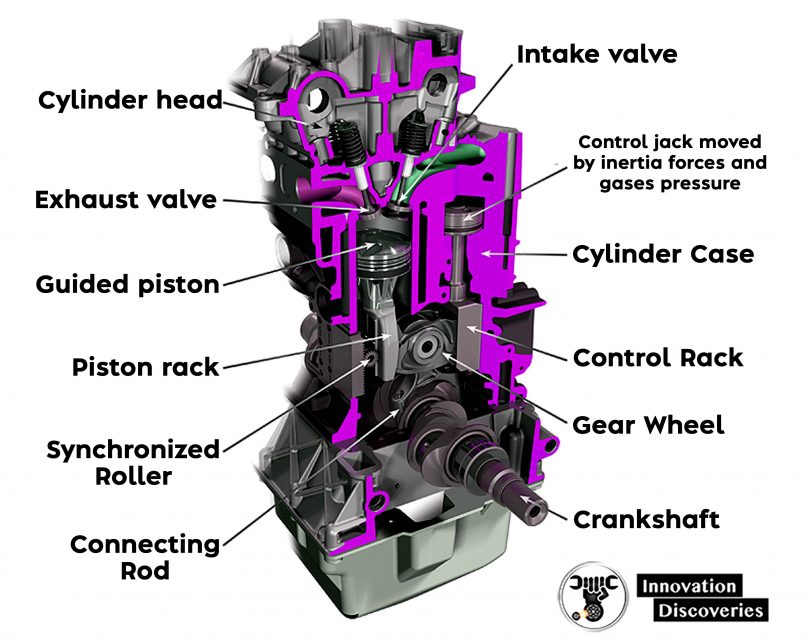
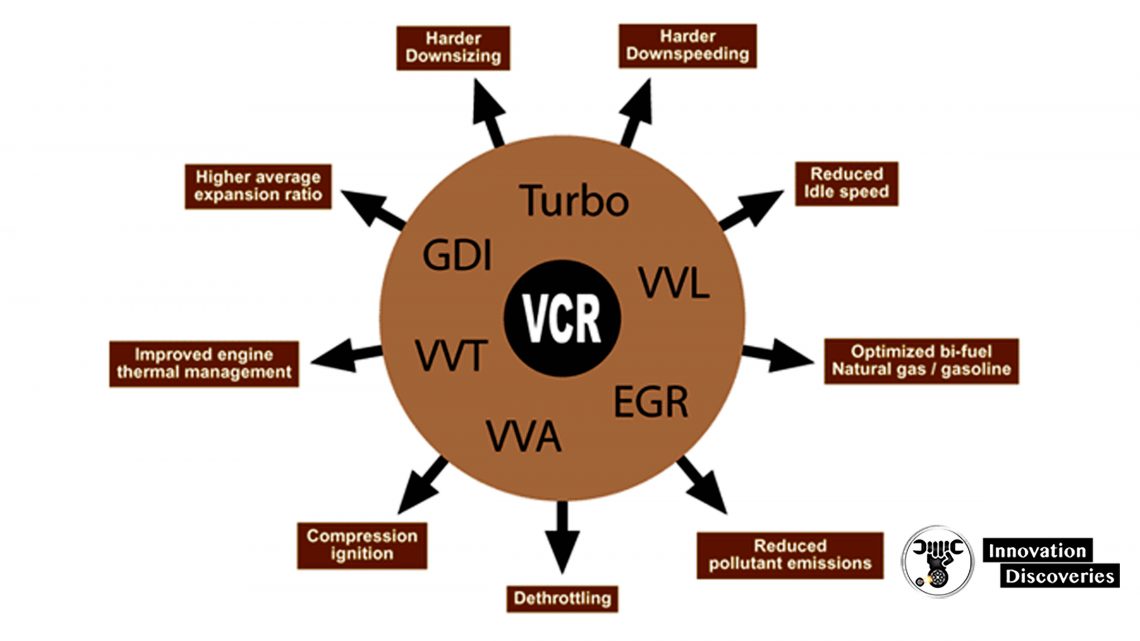
- What Causes On The Turbocharger Overheat?
- The Differences Between Petrol And Diesel Turbos
- 5 Reasons You Shouldn’t Buy A Turbocharged Car
- TURBOCHARGER: COMPONENTS, WORKING PRINCIPLES, AND TYPES
- How Variable Valve Timing Works, And How it Makes Your Engine Better
- Exhaust Gas Recirculation (EGR)
READ MORE ABOUT TURBO:
TURBOCHARGER: COMPONENTS, WORKING PRINCIPLES, AND TYPES
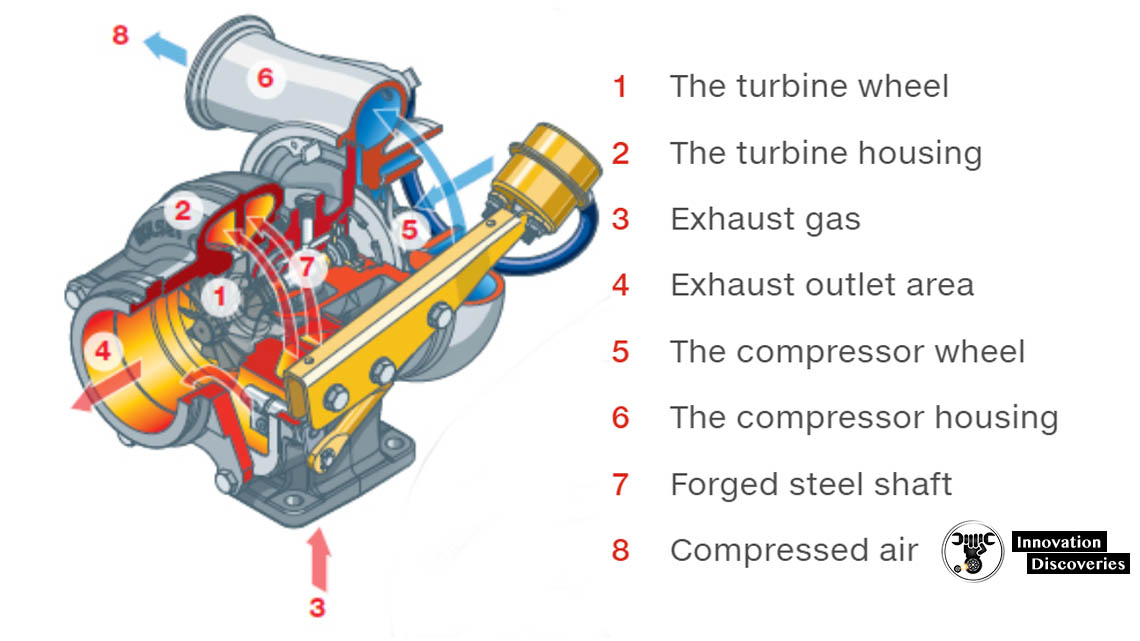
Visit Forum
Visit Our Friendly Website


